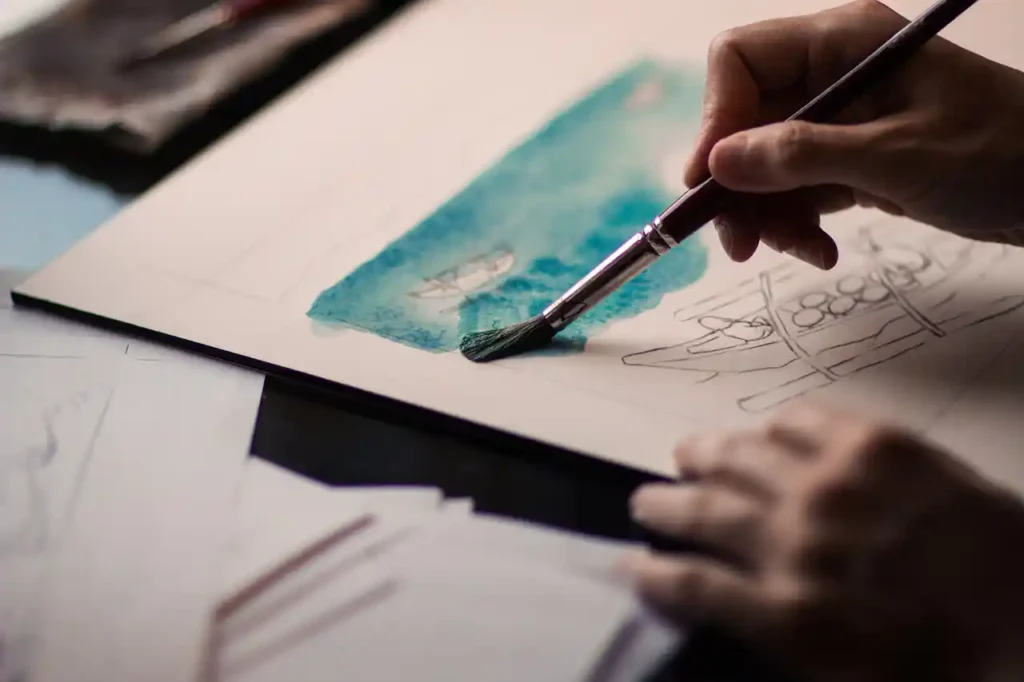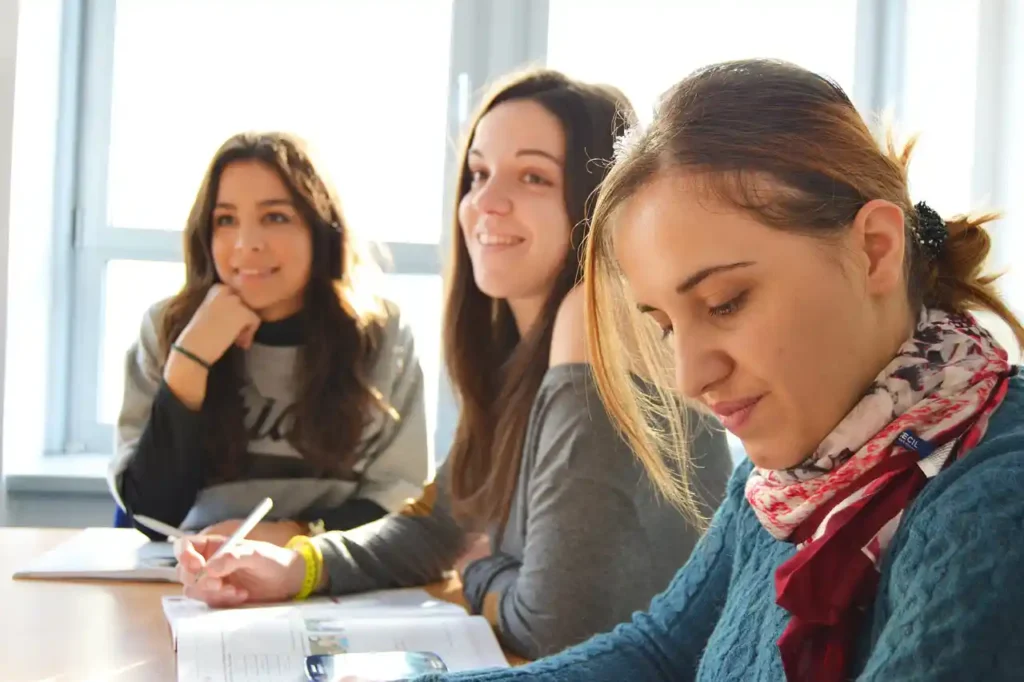How to Unleash Your Creativity in High-Pressure Times

Stress and creativity are often seen as opposites. Stress is the enemy of creativity, the source of mental blocks, anxiety, and frustration. Creativity is the antidote to stress, the way to escape from reality, relax, and express yourself. But what if we told you that stress and creativity are not always at odds? What if we showed you how to use stress as a catalyst for creativity, rather than a barrier? In this article, we will explore the surprising relationship between stress and creativity, and how you can spark your creative potential in high-pressure times.
The Science Behind Stress and Creativity
Stress is a natural response to challenging or threatening situations. It activates the sympathetic nervous system, which prepares the body for fight or flight. Stress hormones such as adrenaline and cortisol increase heart rate, blood pressure, breathing, and alertness. This can help us perform better in certain tasks that require focus, speed, and accuracy. However, chronic or excessive stress can have negative effects on our health, mood, and cognition. It can impair memory, attention, learning, and decision making. It can also reduce our motivation, confidence, and curiosity.
Creativity, on the other hand, is the ability to generate novel and useful ideas, products, or solutions. It involves divergent thinking, which is the generation of many possible options, and convergent thinking, which is the evaluation and selection of the best option. Creativity also requires cognitive flexibility, which is the ability to switch between different perspectives, rules, or strategies. Creativity is influenced by many factors, such as personality, motivation, environment, and mood.
The relationship between stress and creativity is complex and depends on several variables, such as the type, intensity, duration, and source of stress, as well as the individual’s coping style, resilience, and mindset. Some studies have found that moderate levels of stress can enhance creativity, while others have found that stress can impair creativity. Some researchers have proposed that stress can have a U-shaped or inverted U-shaped effect on creativity, meaning that too little or too much stress can be detrimental, but an optimal level of stress can be beneficial.
One possible explanation for this phenomenon is the Yerkes-Dodson law, which states that performance on a task varies with arousal level. Arousal is a physiological and psychological state of activation and readiness. Low arousal can lead to boredom, fatigue, and lack of interest, while high arousal can lead to anxiety, panic, and overwhelm. Optimal arousal can lead to excitement, engagement, and challenge. The optimal level of arousal depends on the task complexity and the individual’s preferences. For simple or well-learned tasks, higher arousal can improve performance, while for complex or novel tasks, lower arousal can improve performance.
Another possible explanation is the challenge-threat theory, which states that stress can have different effects on performance depending on how the individual appraises the situation. If the individual perceives the situation as a challenge, meaning that they have the resources and skills to cope with it, they will experience positive emotions, such as confidence, curiosity, and enthusiasm, and perform better. If the individual perceives the situation as a threat, meaning that they lack the resources and skills to cope with it, they will experience negative emotions, such as fear, anger, and frustration, and perform worse.
Therefore, stress and creativity are not mutually exclusive. In fact, small doses of stress, such as juggling multiple projects or working under a tight deadline, can produce the best ideas, because they motivate the brain to work toward specific goals, activate the reward system, and stimulate the generation of new neural connections. However, too much stress, especially when it is chronic, uncontrollable, or unpredictable, can hinder creativity, because it overwhelms the brain, depletes the cognitive resources, and inhibits the exploration of new possibilities.
How to Spark Creativity When You’re Feeling Stressed

So, how can you turn the stress of disruption into fuel for creativity, rather than a barrier? Here are four science-backed steps to help you unleash your creative potential in high-pressure times:
1. Reframe the situation
The first step is to change your mindset about stress and creativity. Instead of seeing stress as a negative and creativity as a positive, see them as interrelated and dynamic. Stress can be a source of creativity, and creativity can be a way to cope with stress. Instead of seeing the situation as a threat, see it as a challenge. Instead of focusing on the problems, focus on the opportunities. Instead of feeling helpless, feel empowered. Reframing the situation can help you reduce the negative effects of stress and enhance the positive effects of creativity.
One way to reframe the situation is to use positive affirmations, such as “I can handle this”, “I have the skills and resources to overcome this”, or “This is a chance to learn and grow”. Another way is to use cognitive reappraisal, which is a technique to reinterpret the meaning and emotional impact of a stressful event. For example, you can ask yourself questions such as “What is the worst that can happen?”, “How likely is that to happen?”, “What can I do to prevent or mitigate that?”, or “What can I learn from this?”. By reframing the situation, you can shift your perspective from a fixed mindset, which believes that abilities are innate and unchangeable, to a growth mindset, which believes that abilities can be developed and improved through effort and feedback.
2. Relax your body and mind
The second step is to relax your body and mind, which can help you lower your stress level, restore your cognitive resources, and enhance your creative thinking. Relaxation can take many forms, such as deep breathing, meditation, yoga, exercise, music, art, or hobbies. The key is to find something that works for you and that you enjoy. Relaxation can help you calm your nervous system, reduce your stress hormones, increase your blood flow, and improve your mood. Relaxation can also help you enter a state of flow, which is a state of optimal experience, where you are fully immersed, focused, and engaged in an activity that is challenging but achievable, and that provides immediate feedback and rewards. Flow can boost your creativity, productivity, and happiness.
One way to relax your body and mind is to use the 4-7-8 breathing technique, which is a simple and effective method to reduce stress and anxiety. To do this, inhale through your nose for four seconds, hold your breath for seven seconds, and exhale through your mouth for eight seconds. Repeat this cycle four times. Another way is to use mindfulness meditation, which is a practice of paying attention to the present moment, without judgment or distraction. Mindfulness meditation can help you increase your awareness, clarity, and acceptance of your thoughts, feelings, and sensations. Mindfulness meditation can also help you enhance your cognitive flexibility, which is the ability to switch between different perspectives, rules, or strategies, and which is essential for creativity.
3. Stimulate your brain
The third step is to stimulate your brain, which can help you increase your arousal level, activate your reward system, and generate new neural connections. Stimulation can come from various sources, such as novelty, variety, curiosity, challenge, or feedback. The key is to find something that sparks your interest, that exposes you to new information or experiences, that challenges you to learn or improve, or that provides you with positive reinforcement or recognition. Stimulation can help you overcome boredom, fatigue, and lack of interest, which can impair your creativity. Stimulation can also help you enhance your divergent thinking, which is the generation of many possible options, and which is crucial for creativity.
One way to stimulate your brain is to use the task-switching technique, which is a method to boost your creativity by switching between different tasks at a set interval. This can help you reset your thinking, avoid mental blocks, and approach each task from fresh angles. For example, you can work on one project for 15 minutes, then switch to another project for 15 minutes, and then switch back to the first project, and so on. Another way is to use the challenge-threat theory, which is a framework to optimize your performance by perceiving the situation as a challenge, rather than a threat. For example, you can set specific, measurable, achievable, relevant, and time-bound (SMART) goals for yourself, monitor your progress, seek feedback, and celebrate your achievements.
4. Collaborate with others

The fourth step is to collaborate with others, which can help you reduce your isolation, increase your social support, and diversify your perspectives. Collaboration can involve various forms of interaction, such as communication, cooperation, coordination, or co-creation. The key is to find people who share your vision, values, and goals, who complement your skills and strengths, and who challenge and inspire you. Collaboration can help you cope with stress, by providing you with emotional, informational, or instrumental support. Collaboration can also help you enhance your convergent thinking, which is the evaluation and selection of the best option, and which is vital for creativity.
One way to collaborate with others is to use the brainstorming technique, which is a process of generating and sharing ideas in a group, without criticism or evaluation. This can help you increase the quantity and quality of your ideas, by building on each other’s suggestions, combining different elements, or finding new angles. Another way is to use the feedback technique, which is a process of giving and receiving constructive comments on your work, with the intention of improving it. Feedback can help you improve your creativity, by identifying your strengths and weaknesses, providing you with new insights or perspectives, or suggesting alternative solutions or approaches.
Conclusion
Stress and creativity are not mutually exclusive. In fact, small doses of stress can produce the best ideas, because they motivate the brain to work toward specific goals, activate the reward system, and stimulate the generation of new neural connections. However, too much stress, especially when it is chronic, uncontrollable, or unpredictable, can hinder creativity, because it overwhelms the brain, depletes the cognitive resources, and inhibits the exploration of new possibilities.
In this article, we have shared four science-backed steps to help you unleash your creativity in high-pressure times:
- Reframe the situation: Change your mindset about stress and creativity, and see the situation as a challenge, rather than a threat.
- Relax your body and mind: Lower your stress level, restore your cognitive resources, and enhance your creative thinking, by using relaxation techniques, such as breathing, meditation, or hobbies.
- Stimulate your brain: Increase your arousal level, activate your reward system, and generate new neural connections, by using stimulation techniques, such as task-switching, goal-setting, or feedback.
- Collaborate with others: Reduce your isolation, increase your social support, and diversify your perspectives, by using collaboration techniques, such as brainstorming, feedback, or co-creation.
By following these steps, you can turn the stress of disruption into fuel for creativity, rather than a barrier. You can spark your creative potential in high-pressure times, and produce novel and useful ideas, products, or solutions. You can unleash your creativity, and make a positive impact on the world. 🚀
“`
Source:
(1) The Surprising Relationship Between Stress and Creativity – HubSpot Blog.
(2) 4 Ways to Spark Creativity When You’re Feeling Stressed. .